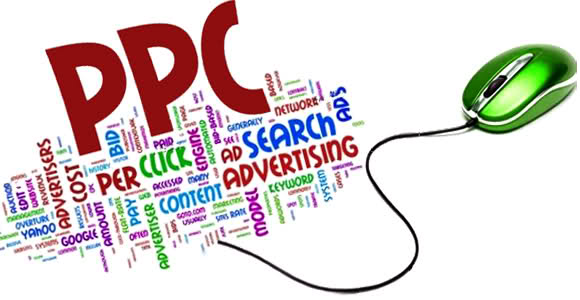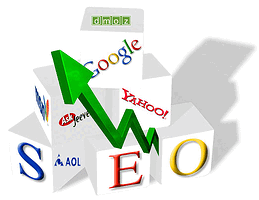 One of the easiest and quickest ways of getting traffic to your website is by using Pay-Per-Click (PPC) advertising. The two most popular PPC programs are Google AdWords and Yahoo Search Marketing. To clarify what PPC actually does, you begin by creating short ads that will be displayed on the search engine results pages (SERP) as Sponsored Links. When you create the ad, you are also identifying the keywords that will draw the ad to the SERP.
One of the easiest and quickest ways of getting traffic to your website is by using Pay-Per-Click (PPC) advertising. The two most popular PPC programs are Google AdWords and Yahoo Search Marketing. To clarify what PPC actually does, you begin by creating short ads that will be displayed on the search engine results pages (SERP) as Sponsored Links. When you create the ad, you are also identifying the keywords that will draw the ad to the SERP.
Your ads will be displayed in the Sponsored Links sections of various SERPs. The position will be determined by how much you are willing to pay for any clickthrough that results from a viewer seeing your ad. The more you are willing to pay, the higher your positioning will be for your ad as compared to those ads that have a lower clickthrough price. The price you pay is based on how popular the keyword and how competitive you choose to be. For example, if you were to create an ad for the keyword, "web design," you would be competing for a top position in over 132,000,000 SERPs. However, if you use the keyword, "web design reno," you are only competing for good position in 375 SERPs. Once more, looking at and choosing good keywords is the crucial to compete effectively. In addition, the search term, web design, will cost over $2.00 per clickthrough whereas the search term, web design reno, will only cost around $.26 per clickthrough.
The basic formula for how much traffic you will receive from your ad is your Budget Amount divided by the Clickthrough Cost. If you have budgeted $100 a month for your ad campaign and you have agreed to pay $.25 per Clickthrough, you will get approximately 400 visitors to your website as a result of PPC advertising. There is a real science to creating ads that attract traffic, especially traffic that will respond to your CTA. You certainly want to convert as much traffic as possible so your advertising dollars are not wasted on tire-kickers. Therefore, your landing page -- the page your visitor lands on when they click on your ad -- must have a clear marketing focus. You will definitely want to display a strong CTA on your landing page and you can also put a tracking code on the page that helps determine how much of the traffic converts to a sale or your CTA. The reason PPC is such a good starting point for your online marketing efforts is because you simply work within an acceptable budget, creating your ads and testing them for effectiveness. In our next lesson we will focus on what makes a good PPC Ad.
Google is the easier PPC program to start with because as long as you stay within their guidelines, you can create an ad and have it running in less than 15 minutes. At least, that is to say that, you can if you can write an effective ad that quickly. Yahoo Search Marketing will require that you submit your campaign of ads and keyword designations for approval. Yahoo usually comes back to you within 24 to 48 hours, but the delay is annoying if your ads are not approved and you have to re-submit. Remember, however, Google is the search engine of choice by almost half of all search engine users, so this is a good place to start. Google and Yahoo will display your ads for keywords searched not only on their own SERPs but both feed other search engines as well. Google feeds Google AdWords ads to Ask, Lycos, iWon, DMOS, HotBot, Netscape and AOL Search. Yahoo feeds MSN, AlltheWeb and AltaVista. Your positioning may not be the same in every search engine, however, your ad is being sent to more than just Google or Yahoo when you set up your campaign.
Be sure to watch your Google PPC billing statistics. Set your budget too low, and you will get no traffic at all. Set it too high, and you will add that budget to your credit card on file every day. So rather than getting an unpleasant surprise at the end of the month, check it every day for the first few months until you really can predict the results.
Of course, we are seeking high positioning organically -- on the left side of the SERP. But until you have managed to get the search engines to notice your website, index your pages and give you good positioning naturally, PPC is one of the best ways to get your website in front of viewers looking for your product or service based on appropriate keywords. It's a great way to get started. Once you have achieved your goal of strong organic positioning, you can revise or cut back your PPC advertising when you can rely on being found simply because you website is awesome!
Copyright (c) 2012, The Computer Goddess
http://www.computergoddess.com
Reprinted with Permission.


